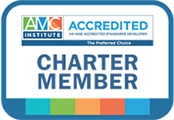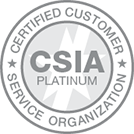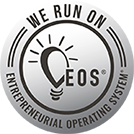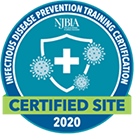A Guide to Successful Nonprofit Event Planning
For many nonprofit organizations, the annual conference is a key opportunity to connect with members, advance education, and reinforce mission impact. While attendees may only see the polished outcome, successful event planning begins long before the doors open, and involves far more than choosing a venue and setting an agenda. Keep reading to learn key components of the planning process, based on the approach Association Headquarters uses to support its client partners.
Start with Strategy, Not Schedules
Effective nonprofit event planning starts with a clear understanding of purpose. Before locking in logistics, organizations should ask:
- What is the primary goal: member engagement, revenue, education?
- Who are we trying to reach, and what matters most to them?
- How will we evaluate success?
These answers should guide decisions around format, timing, content, and budget. Starting with strategy ensures the event supports broader organizational priorities, not just logistical feasibility.
Venue Selection: More Than Just Space
Location affects attendance, accessibility, and budget. While square footage matters, other considerations include:
- Proximity to major airports or transit hubs
- Hotel block availability and pricing
- On-site capabilities for A/V, catering, and internet
- Accessibility for all participants Flow and safety of the physical layout
Nonprofits should evaluate venues not just for cost, but for how well the space supports the attendee experience and event goals.
Program Development: Align Content with Member Needs
Session content is often the main draw for attendees, so thoughtful program design is essential. Consider:
- Surveying members to identify high-priority topics
- Aligning sessions with industry trends and professional development needs
- Including diverse speaker perspectives and formats (panels, workshops, keynotes)
- Offering continuing education (CE) credits where applicable
Collaboration with volunteer leaders can enhance program relevance and ensure the content reflects the community’s needs.
Manage Details with Systems and Structure
Logistics can make or break an attendee’s experience. Key areas to address include:
- Registration systems and on-site check-in
- Name badges, signage, and printed materials
- Room scheduling and equipment setup Staff and volunteer assignments
Establishing clear internal timelines and responsibilities ensures nothing is left to chance.
Make Sponsorship a Strategic Element
Many nonprofit events rely on sponsor and exhibitor revenue to remain viable. To deliver value:
- Create clear sponsorship tiers with defined benefits
- Offer exposure opportunities that align with sponsor goals (not just logos on signage)
- Track and share metrics on visibility and engagement
When sponsorship is integrated into the event strategy, not an afterthought, it becomes a sustainable revenue stream.
Focus on the Attendee Experience
Small details often define how attendees feel about an event. Some best practices include:
- Using consistent, easy-to-read signage for wayfinding
- Offering interactive elements like discussion lounges or gamification
- Gathering feedback through surveys to identify areas for improvement
Ultimately, a well-planned event feels effortless to the participant, even if the planning was anything but.
Intentional Planning for Impactful Nonprofit Events
Nonprofit event planning is complex, but with structure, collaboration, and alignment around purpose, it can become a powerful tool for mission delivery.
Whether you're launching a new event or elevating a long-standing one, intentional planning is what sets successful conferences apart. Contact us at inquire@ahint.com or request a proposal to start building an event that delivers on your mission.




